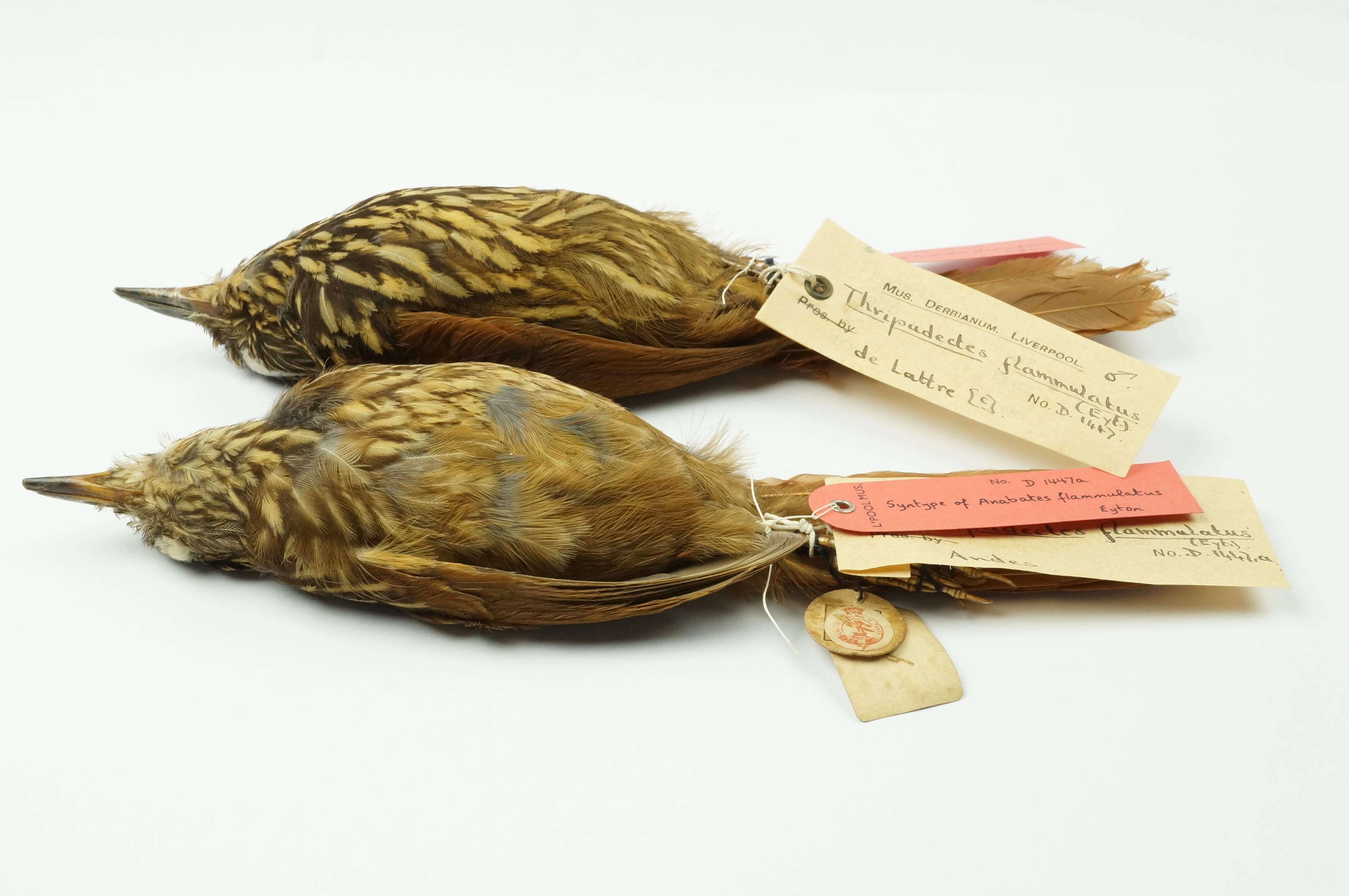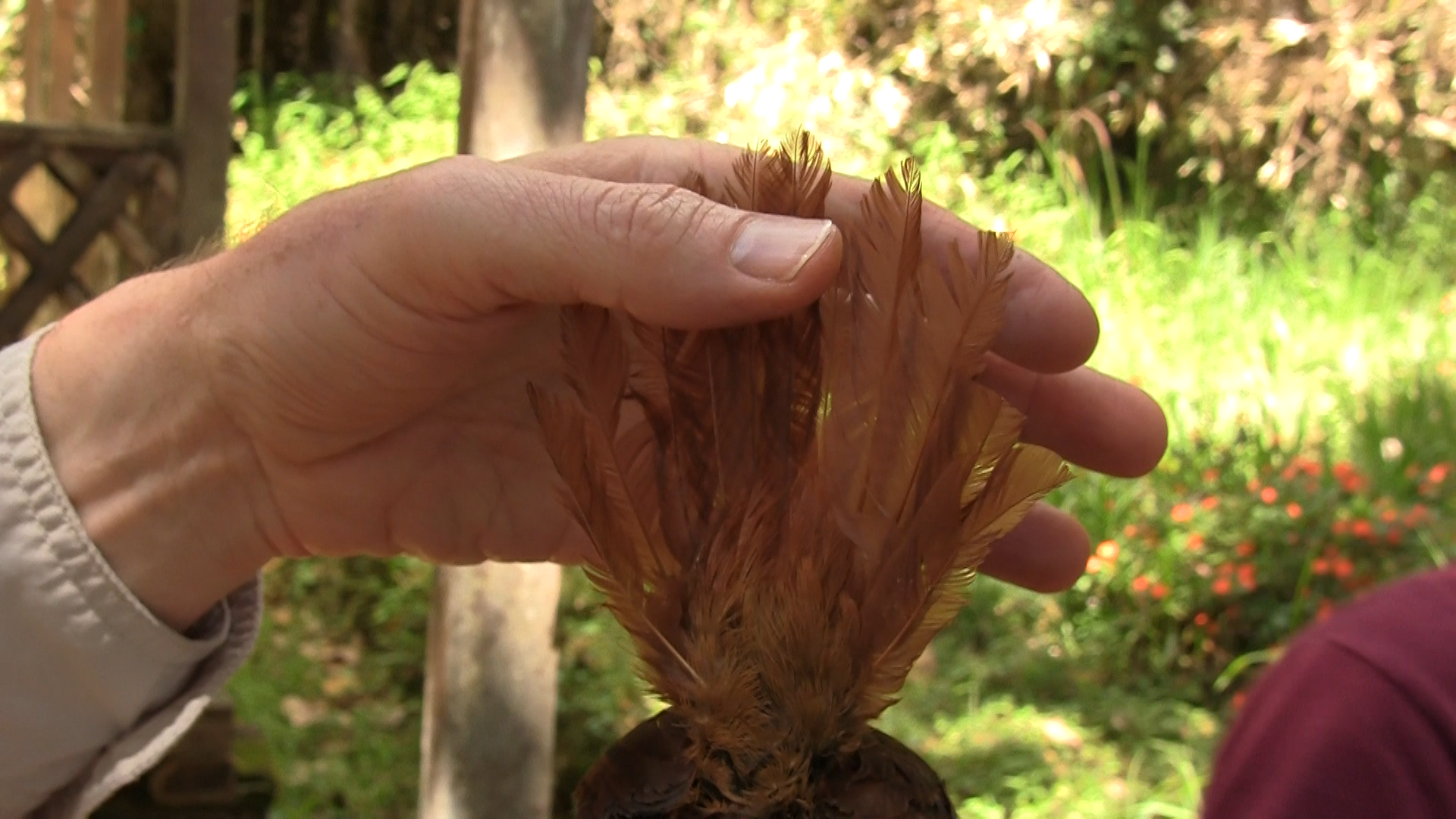|
Thripadectes
''Thripadectes'' is a genus of Neotropical birds in the ovenbird family (biology), family Furnariidae. Taxonomy The genus was established by Philip Sclater in 1862 with the flammulated treehunter as the type species. The name ''Thripadectes'' is a combination of the Greek language, Greek words or , meaning "woodworm" and , meaning "biter" (from , meaning "to bite"). The genus contains seven species: * Flammulated treehunter, ''Thripadectes flammulatus'' * Striped treehunter, ''Thripadectes holostictus'' * Uniform treehunter, ''Thripadectes ignobilis'' * Black-billed treehunter, ''Thripadectes melanorhynchus'' * Streak-breasted treehunter, ''Thripadectes rufobrunneus'' * Peruvian treehunter, ''Thripadectes scrutator'' * Streak-capped treehunter, ''Thripadectes virgaticeps'' References Thripadectes, Bird genera Taxa named by Philip Sclater Taxonomy articles created by Polbot {{Furnariidae-stub ... [...More Info...] [...Related Items...] OR: [Wikipedia] [Google] [Baidu] |
Black-billed Treehunter
The black-billed treehunter (''Thripadectes melanorhynchus'') is a species of bird in the Furnariinae subfamily of the ovenbird family Furnariidae. It is found in Colombia, Ecuador, and Peru. Taxonomy and systematics The black-billed treehunter has two subspecies, the nominate ''T. m. melanorhynchus'' ( Tschudi, 1844) and ''T. m. striaticeps'' (Sclater & Salvin, 1875). It and the streak-breasted treehunter (''T. rufobrunneus'') are sister species.Claramunt, S., Derryberry, E.P., Cadena, C.D., Cuervo, A.M., Sanín, C. and Brumfield, R.T. (2013). Phylogeny and classification of Automolus foliage-gleaners and allies (Furnariidae). Condor 115(2): 375–385. Description The black-billed treehunter is long and weighs . It is a bulky, dark furnariid with a thrush-like shape. The sexes have the same plumage. Adults of the nominate subspecies have a mostly blackish-brown face with well-defined buff streaks and lores that are grizzled blackish brown and buff. Their crown is black ... [...More Info...] [...Related Items...] OR: [Wikipedia] [Google] [Baidu] |
Flammulated Treehunter
The flammulated treehunter (''Thripadectes flammulatus'') is a species of bird in the Furnariinae subfamily of the ovenbird family Furnariidae. It is found in Colombia, Ecuador, Peru, and Venezuela. Taxonomy and systematics The flammulated treehunter is a sister species of the uniform treehunter (''T. ignobilis'') and Peruvian treehunter (''T. scrutator'').Derryberry, E. P., S. Claramunt, G. Derryberry, R. T. Chesser, J. Cracraft, A. Aleixo, J. Pérez-Emán, J. V. Remsen, Jr., and R. T. Brumfield. (2011). Lineage diversification and morphological evolution in a large-scale continental radiation: the Neotropical ovenbirds and woodcreepers (Aves: Furnariidae). Evolution 65(10):2973–2986. https://doi.org/10.1111/j.1558-5646.2011.01374.x It has two subspecies, the nominate ''T. f. flammulatus'' ( Eyton, 1849) and ''T. f. bricenoi'' ( Berlepsch, 1907). Description The flammulated treehunter is long and weighs . It is the largest and most strikingly patterned member of its g ... [...More Info...] [...Related Items...] OR: [Wikipedia] [Google] [Baidu] |
Streak-breasted Treehunter
The streak-breasted treehunter (''Thripadectes rufobrunneus'') is a passerine bird in the Furnariinae subfamily of the ovenbird family Furnariidae. It is found in Costa Rica and Panama. Taxonomy and systematics The streak-breasted treehunter was formally described in 1865 by the American amateur ornithologist George Newbold Lawrence from a specimen collected by Alexander von Frantzius near San José in Costa Rica. Lawrence coined the binomial name ''Philydor rufobrunneus''. The specific epithet ''rufobrunneus'' is Modern Latin meaning "brown". The streak-breasted treehunter is now placed in the genus ''Thripadectes'' that was introduced in 1862 by Philip Sclater. The streak-breasted treehunter is monotypic: no subspecies are recognised. It and the black-billed treehunter (''T. melanorhynchus'') form a superspecies.Remsen, Jr., J. V. (2020). Streak-breasted Treehunter (''Thripadectes rufobrunneus''), version 1.0. In Birds of the World (J. del Hoyo, A. Elliott, J. Sargatal, ... [...More Info...] [...Related Items...] OR: [Wikipedia] [Google] [Baidu] |
Flammulated Treehunter
The flammulated treehunter (''Thripadectes flammulatus'') is a species of bird in the Furnariinae subfamily of the ovenbird family Furnariidae. It is found in Colombia, Ecuador, Peru, and Venezuela. Taxonomy and systematics The flammulated treehunter is a sister species of the uniform treehunter (''T. ignobilis'') and Peruvian treehunter (''T. scrutator'').Derryberry, E. P., S. Claramunt, G. Derryberry, R. T. Chesser, J. Cracraft, A. Aleixo, J. Pérez-Emán, J. V. Remsen, Jr., and R. T. Brumfield. (2011). Lineage diversification and morphological evolution in a large-scale continental radiation: the Neotropical ovenbirds and woodcreepers (Aves: Furnariidae). Evolution 65(10):2973–2986. https://doi.org/10.1111/j.1558-5646.2011.01374.x It has two subspecies, the nominate ''T. f. flammulatus'' ( Eyton, 1849) and ''T. f. bricenoi'' ( Berlepsch, 1907). Description The flammulated treehunter is long and weighs . It is the largest and most strikingly patterned member of its g ... [...More Info...] [...Related Items...] OR: [Wikipedia] [Google] [Baidu] |
Striped Treehunter
The striped treehunter (''Thripadectes holostictus'') is a species of bird in the Furnariinae subfamily of the ovenbird family Furnariidae. It is found in Bolivia, Colombia, Ecuador, Peru, and Venezuela. Taxonomy and systematics The striped treehunter shares genus ''Thripadectes'' with six other treehunters. It has these three subspecies: *''T. h. holostictus'' ( Sclater, PL & Salvin, 1876) *''T. h. moderatus'' Zimmer, JT, 1935 *''T. h. striatidorsus'' ( Berlepsch & Taczanowski, 1884) However, the subspecies' size and plumage differences may prove to be clinal as more data become available. If true, the division into subspecies might not be warranted.Remsen, Jr., J. V. and G. M. Kirwan (2020). Striped Treehunter (''Thripadectes holostictus''), version 1.0. In Birds of the World (J. del Hoyo, A. Elliott, J. Sargatal, D. A. Christie, and E. de Juana, Editors). Cornell Lab of Ornithology, Ithaca, NY, USA. https://doi.org/10.2173/bow.strtre1.01 retrieved September 6, 2023 D ... [...More Info...] [...Related Items...] OR: [Wikipedia] [Google] [Baidu] |
Streak-capped Treehunter
The streak-capped treehunter (''Thripadectes virgaticeps'') is a species of bird in the Furnariinae subfamily of the ovenbird family Furnariidae. It is found in Colombia, Ecuador, and Venezuela. Taxonomy and systematics The streak-capped treehunter has these six subspecies: *''T. v. klagesi'' (Hellmayr & Seilern, 1912) *''T. v. tachirensis'' Phelps, WH & Phelps, WH Jr, 1958 *''T. v. magdalenae'' Meyer de Schauensee, 1945 *''T. v. sclateri'' Berlepsch, 1907 *''T. v. virgaticeps'' Lawrence, 1874 *''T. v. sumaco'' Chapman, 1925 These subspecies are open to some dispute. Some of them apparently intergrade, and the subspecies in Colombia and Ecuador are "in need of re-evaluation".Remsen, Jr., J. V. and E. de Juana (2020). Streak-capped Treehunter (''Thripadectes virgaticeps''), version 1.0. In Birds of the World (J. del Hoyo, A. Elliott, J. Sargatal, D. A. Christie, and E. de Juana, Editors). Cornell Lab of Ornithology, Ithaca, NY, USA. https://doi.org/10.2173/bow.stctre1.0 ... [...More Info...] [...Related Items...] OR: [Wikipedia] [Google] [Baidu] |
Peruvian Treehunter
The Peruvian treehunter (''Thripadectes scrutator'') is a species of bird in the Furnariinae subfamily of the ovenbird family Furnariidae. It is found in Bolivia and Peru. It is also called the rufous-backed treehunterClements, J. F., T. S. Schulenberg, M. J. Iliff, T. A. Fredericks, J. A. Gerbracht, D. Lepage, S. M. Billerman, B. L. Sullivan, and C. L. Wood. 2022. The eBird/Clements checklist of birds of the world: v2022. Downloaded from https://www.birds.cornell.edu/clementschecklist/download/ retrieved November 10, 2022 or buff-throated treehunter. Taxonomy and systematics The Peruvian treehunter is a sister species of the uniform treehunter (''T. ignobilis'') and flammulated treehunter (''T. flammulatus'').Derryberry, E. P., S. Claramunt, G. Derryberry, R. T. Chesser, J. Cracraft, A. Aleixo, J. Pérez-Emán, J. V. Remsen, Jr., and R. T. Brumfield. (2011). Lineage diversification and morphological evolution in a large-scale continental radiation: the Neotropical ovenbirds ... [...More Info...] [...Related Items...] OR: [Wikipedia] [Google] [Baidu] |
Uniform Treehunter
The uniform treehunter (''Thripadectes ignobilis'') is a species of bird in the Furnariinae subfamily of the ovenbird family Furnariidae. It is found in Colombia and Ecuador. Taxonomy and systematics The uniform treehunter is a sister species of the flammulated treehunter (''T. flammulatus'') and Peruvian treehunter (''T. scrutator'').Derryberry, E. P., S. Claramunt, G. Derryberry, R. T. Chesser, J. Cracraft, A. Aleixo, J. Pérez-Emán, J. V. Remsen, Jr., and R. T. Brumfield. (2011). Lineage diversification and morphological evolution in a large-scale continental radiation: the Neotropical ovenbirds and woodcreepers (Aves: Furnariidae). Evolution 65(10):2973–2986. https://doi.org/10.1111/j.1558-5646.2011.01374.x It is monotypic. Description The uniform treehunter is long and weighs between . It is the smallest, darkest, and shortest-billed member of its genus. The sexes have the same plumage. Adults have a vague narrow supercilium and wide eyering that are dull tawny-rufo ... [...More Info...] [...Related Items...] OR: [Wikipedia] [Google] [Baidu] |
Bird Genera
Birds are a group of warm-blooded vertebrates constituting the class (biology), class Aves (), characterised by feathers, toothless beaked jaws, the Oviparity, laying of Eggshell, hard-shelled eggs, a high Metabolism, metabolic rate, a four-chambered heart, and a strong yet lightweight Bird skeleton, skeleton. Birds live worldwide and range in size from the bee hummingbird to the common ostrich. There are over 11,000 living species and they are split into 44 Order (biology), orders. More than half are passerine or "perching" birds. Birds have Bird wing, wings whose development varies according to species; the only known groups without wings are the extinct moa and elephant birds. Wings, which are modified forelimbs, gave birds the ability to fly, although further evolution has led to the Flightless bird, loss of flight in some birds, including ratites, penguins, and diverse endemism, endemic island species. The digestive and respiratory systems of birds are also uniquely a ... [...More Info...] [...Related Items...] OR: [Wikipedia] [Google] [Baidu] |
Greek Language
Greek (, ; , ) is an Indo-European languages, Indo-European language, constituting an independent Hellenic languages, Hellenic branch within the Indo-European language family. It is native to Greece, Cyprus, Italy (in Calabria and Salento), southern Albania, and other regions of the Balkans, Caucasus, the Black Sea coast, Asia Minor, and the Eastern Mediterranean. It has the list of languages by first written accounts, longest documented history of any Indo-European language, spanning at least 3,400 years of written records. Its writing system is the Greek alphabet, which has been used for approximately 2,800 years; previously, Greek was recorded in writing systems such as Linear B and the Cypriot syllabary. The Greek language holds a very important place in the history of the Western world. Beginning with the epics of Homer, ancient Greek literature includes many works of lasting importance in the European canon. Greek is also the language in which many of the foundational texts ... [...More Info...] [...Related Items...] OR: [Wikipedia] [Google] [Baidu] |
Species
A species () is often defined as the largest group of organisms in which any two individuals of the appropriate sexes or mating types can produce fertile offspring, typically by sexual reproduction. It is the basic unit of Taxonomy (biology), classification and a taxonomic rank of an organism, as well as a unit of biodiversity. Other ways of defining species include their karyotype, DNA sequence, morphology (biology), morphology, behaviour, or ecological niche. In addition, palaeontologists use the concept of the chronospecies since fossil reproduction cannot be examined. The most recent rigorous estimate for the total number of species of eukaryotes is between 8 and 8.7 million. About 14% of these had been described by 2011. All species (except viruses) are given a binomial nomenclature, two-part name, a "binomen". The first part of a binomen is the name of a genus to which the species belongs. The second part is called the specific name (zoology), specific name or the specific ... [...More Info...] [...Related Items...] OR: [Wikipedia] [Google] [Baidu] |




